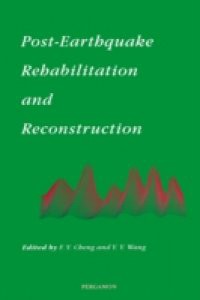Damage assessment, rehabilitation, decision-making, social consequences, repair and reconstruction; these are all critical factors for considerations following natural disasters such as earthquakes. In order to address these issues, the United States of America and the Peoples Republic of China regularly organize bilateral symposia/workshops to investigate multiple hazard mitigation, particularly with respect to earthquake engineering. This book contains state-of-the-art reports presented by world-renowned researchers at the US/PRC Sympsosium Workshop on Post-Earthquake Rehabilitation and Reconstruction held in Kunming, Yunnan, China, May 1995. The following key areas are addressed: damage assessment of structures after earthquakes; lessons of post-earthquake recovery, rehabilitation and reconstruction, including public policy, land use options, urban planning, and design; issues in and examples of decision-making, and implementation of rehabilitation and reconstruction plans and policies; repair, strengthening, retrofit and control of structures and lifeline systems, post-earthquake socio-economic problems covering issues of relief and recovery; human and organizational behavior during emergency response, and strategies for improvement; real-time monitoring of earthquake response and damage.

